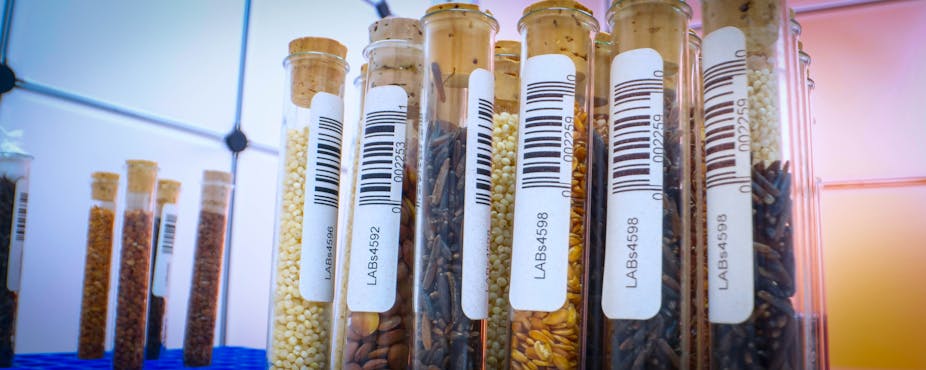South Africa has created a network of facilities to store hundreds of thousands of samples of biological material from plants, animals, bacteria and fungi. The samples are currently held in biobanks in the country. The aim is twofold: to ensure researchers have access to all available samples, and to establish common policies, procedures and standards for biodiversity biobanks. This is important if the country is to keep pace with advances in research.
The South African National Biodiversity Institute’s Professor Michelle Hamer, who heads the Biodiversity Biobanks South Africa project, spoke to The Conversation Africa.
What is a biodiversity biobank and what’s stored in it?
The definition can differ according to context. For the Biodiversity Biobanks South Africa project it’s defined as a repository of biological material that’s not usually of human origin.
That can include reproductive tissues like seeds, eggs and sperm; other tissues (blood, hair, muscle); DNA and other extracts; and environmental samples such as water or soil that contain biological communities. The materials are often cryopreserved (stored at ultra-low temperatures). Some are stored at low or room temperature.
The materials that now fall under the auspices of Biodiversity Biobanks South Africa represent biological communities, species, strains, varieties and breeds present in South Africa. That includes crops and livestock. The samples can be used to support research in a range of disciplines. They could also help in developing new or improved products and practices in several fields: agriculture, human health and wellness, environmental management and conservation biology.
What led to the project being launched?
It’s one of the projects under a research roadmap initiated by the national Department of Science and Innovation in 2017. The programme aims to develop infrastructure that’s accessible to all researchers.
This infrastructure and the research conducted through biobanks can help to address a number of national challenges like climate change and food security. For instance, work done through the genebanks at the country’s Agricultural Research Council has resulted in new maize cultivars. Some are drought resistant; others are resistant to the fall armyworm. This helps smallholder farmers to increase production and ensure household food security.
Read more: How biobanks can help improve the integrity of scientific research
South Africa is well placed to host biodiversity biobanks because it’s one of 17 megadiverse countries (others include Brazil, Mexico, the Democratic Republic of the Congo and Madagascar). Collectively these 17 countries hold more than two thirds of the world’s biodiversity.
They not only have an exceptionally high number of plant, animal and fungi species (more than 100,000 in South Africa), but also a high number or proportion of endemic species – these are only found in the country.
Why is creating one network so important?
South Africa has an estimated half a million items in various biobanks. Most of this material has been collected or established over the last 20 to 30 years.
The problem is that the biobanks holding these samples have traditionally operated largely in isolation. There is not an established culture of using biobanks among biodiversity researchers. A researcher will get funding, go into the field and collect material, analyse it and then keep it in a freezer in their laboratory until, too often, it’s thrown out to free up space.
When another researcher is working on the same species, they have to get funding to do this all over again. This could be addressed if samples were deposited in a biobank at the end of a study and made accessible to other researchers.
One of the reasons for this fragmentation is that some researchers don’t trust the system and fear that if they deposit samples in a biobank they will not be able to access these if they need them later, or they are concerned about the quality of samples that may be supplied by biobanks.
There are no currently no common policies, procedures and standards related to biodiversity biobanks in South Africa, which means that the quality of materials cannot always be assured. While there are international guidelines and standards for biobanks in general, implementation is a common challenge globally.
South Africa also has no established training programme for biobank technicians or curators or managers.
The only way to address these challenges is through working as a cohesive network with a common purpose and shared objectives. The Biodiversity Biobanks South Africa is that network. Creating it solves four problems:
ensures samples aren’t stored in isolation and are accessible
ensures samples are stored, and not thrown away
addresses the issue of trust by promoting credible practices in biobanking
creates a collaborative platform for growing the biobanks so that they hold materials that represent the country’s biodiversity.
There are currently seven participating institutions and almost 20 different biobanks.
What are the benefits?
If South African scientists are to compete in all areas of research and development, they need access to a range of high quality and well documented biobanked materials.
Take genome sequencing technologies. Genome sequencing involves fragmenting an organism’s DNA, studying the composition or sequence of those pieces, then reconstructing it all into the original sequence.
These technologies are being used for an enormous – and ever increasing – range of research and biotechnology applications. That includes understanding the origins and diversification of life on earth, unravelling the functioning of complex ecosystem networks, understanding genetic change and its significance, identifying the genetic basis for adaptive traits that are useful for crop, livestock, fish and wildlife breeding programmes, and much more.
Having access to quality samples representing South Africa’s biodiversity saves time and resources needed to collect biological samples. The samples could even serve as a “bank” of genetic diversity that may be lost in future through climate change, loss of habitats or over-exploitation of natural resources.

